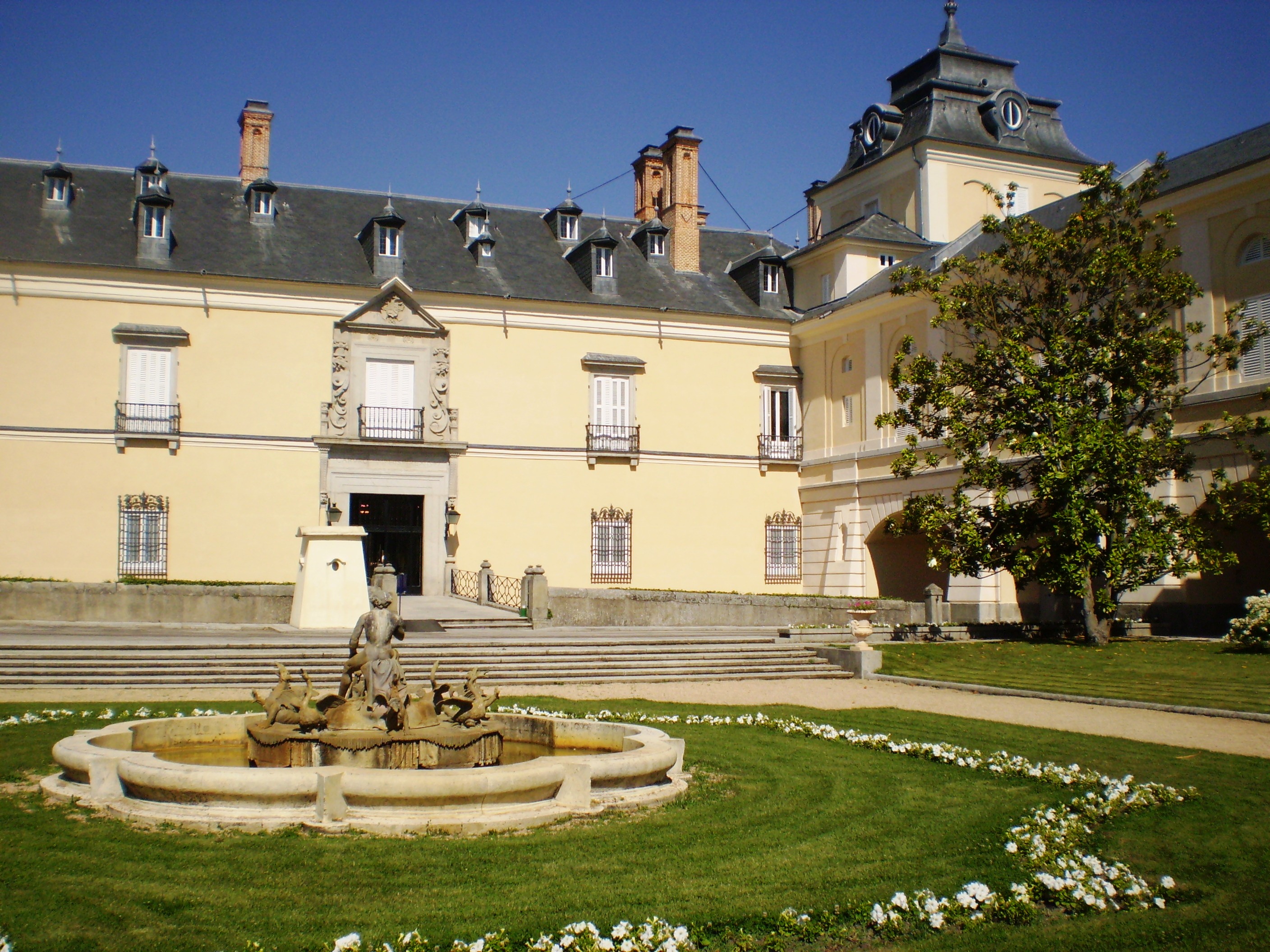Palacio Del Pardo on:
[Wikipedia]
[Google]
[Amazon]
 The Royal Palace of El Pardo ( es, Palacio Real de El Pardo, ) is one of the official residences of the
The Royal Palace of El Pardo ( es, Palacio Real de El Pardo, ) is one of the official residences of the
Royal Palace of El Pardo on Patrimonio Nacional website
{{DEFAULTSORT:Royal Palace Of El Pardo Houses completed in the 15th century Palaces in Madrid Royal residences in Spain Bien de Interés Cultural landmarks in Madrid Buildings and structures in Fuencarral-El Pardo District, Madrid Francisco Franco El Pardo State guesthouses
 The Royal Palace of El Pardo ( es, Palacio Real de El Pardo, ) is one of the official residences of the
The Royal Palace of El Pardo ( es, Palacio Real de El Pardo, ) is one of the official residences of the Spanish royal family
The Spanish royal family consists of King Felipe VI, Queen Letizia, their children (Leonor, Princess of Asturias and Infanta Sofía of Spain), and Felipe's parents, King Juan Carlos I and Queen Sofía. The royal family lives at Zarzuela Palace i ...
and one of the oldest, being used by the Spanish monarchs since Enrique III in the 15th century
The 15th century was the century which spans the Julian dates from 1 January 1401 ( MCDI) to 31 December 1500 ( MD).
In Europe, the 15th century includes parts of the Late Middle Ages, the Early Renaissance, and the early modern period.
M ...
. It is administered by the '' Patrimonio Nacional'' agency and it currently serves as a state guest house.
Overview
The palace began as a royal hunting lodge. It became an alternative residence of the kings of Spain until the reign ofKing Alfonso XII of Spain
Alfonso XII (Alfonso Francisco de Asís Fernando Pío Juan María de la Concepción Gregorio Pelayo; 28 November 185725 November 1885), also known as El Pacificador or the Peacemaker, was King of Spain from 29 December 1874 to his death in 1885 ...
, who died in the palace in 1885.
King Enrique III of Castile ordered the building of the pavilion in 1406, on Mount El Pardo, because of its abundant game. Later, in the time of Emperor Charles V (1547), it was transformed into a palace by the architect Luis de Vega. On 13 March 1604, a massive fire destroyed many of the paintings it housed, including masterpieces by Titian. King Carlos III of Spain renovated the building in the 18th century, appointing his architect Francesco Sabatini to undertake the job.
The interior decoration includes a ceiling fresco
Fresco (plural ''frescos'' or ''frescoes'') is a technique of mural painting executed upon freshly laid ("wet") lime plaster. Water is used as the vehicle for the dry-powder pigment to merge with the plaster, and with the setting of the plaste ...
ed by Gaspar Becerra, and paintings by Vincenzo Carducci and Cabrera.
In 1739 the palace hosted talks between the governments of Britain and Spain, who eventually agreed to the Convention of Pardo
The Convention of Pardo, also known as the Treaty of Pardo or Convention of El Pardo, was a 1739 agreement between Britain and Spain. It sought to resolve trade issues between the two countries and agree boundaries between Spanish Florida and th ...
in a bid to avert a war. However, the Convention failed to prevent war breaking out shortly afterwards.
Dictator Francisco Franco
Francisco Franco Bahamonde (; 4 December 1892 – 20 November 1975) was a Spanish general who led the Nationalist faction (Spanish Civil War), Nationalist forces in overthrowing the Second Spanish Republic during the Spanish Civil War ...
commandeered the palace as his residence after the Spanish Civil War and lived there until his death.
Access
Since Franco's death, the building has been used as a residence for visiting heads of state. When not in use by VIPs, it is open to the public. Objects on display include tapestries made by the Royal Tapestry Factory. Goya was one of the artists who designed tapestries for the palace with dimensions corresponding to specific locations in the building.See also
* Casita del Principe (El Pardo), related building for recreational use * Palace of Zarzuela, nearby royal residence * Ward of El PardoReferences
External links
Royal Palace of El Pardo on Patrimonio Nacional website
{{DEFAULTSORT:Royal Palace Of El Pardo Houses completed in the 15th century Palaces in Madrid Royal residences in Spain Bien de Interés Cultural landmarks in Madrid Buildings and structures in Fuencarral-El Pardo District, Madrid Francisco Franco El Pardo State guesthouses